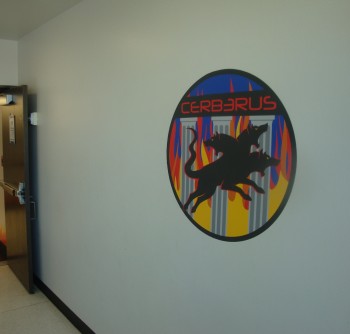Public sector agencies and government authorized contractors that use wide format inkjet plotters, supplies and media can now access LexJet products through GSA Schedule 70 and Solutions for Enterprise-Wide Procurement (SEWP) Government Wide Acquisition Contracts (GWACs).
LexJet, a small business based in Sarasota, Fla., can be accessed directly through GSA Schedule 70 contract number GS-35F-0129Y. LexJet can also be accessed on GSA Schedule 70 through Triad Technology Partners, a woman-owned small business, at contract number GS-35F-0298W.

For users of SEWP, LexJet supplies and consumables are available on Four Point Technology’s SEWP IV Contract NNG07DA16B. Four Points Technology is a Service-Disabled Veteran Owned Small Business (SDVOSB).
“First and foremost, I couldn’t be happier with LexJet’s customer service. Our account specialist, Patrick Callaway, is the bomb, and if he’s not available there’s always someone right on the spot to help us out,” says Mark Watkins, Graphic Lead at Rohmann Services Inc., a contractor at the U.S. Air Force Academy in Colorado Springs. “LexJet goes above and beyond, researching products, printers and inks, even if they’re not related to what we’re going to order from LexJet; it’s like having our own technical expert.”
Public sector agencies can also procure LexJet products with GSA pricing by calling LexJet directly at 800-453-9538 or by visiting the website at www.lexjet.com. LexJet has been serving both private and public sector organizations since 1994 as one of the trailblazers in the wide format inkjet printing market.
“We’re working on providing public sector agencies with as many options as possible so they can choose the procurement method that works best for them,” says Jason Metnick, LexJet vice president. “Our goal is to provide government agencies with the best customer service experience they’ve ever had and to make everything they do related to printing as easy and hassle-free as possible.”
In order to meet the goals stated by Metnick, LexJet has developed a nationwide network of distribution centers, backed by a state-of-the-art logistics system, to make shipping quick and painless. Moreover, each public agency account is supported by a personally-assigned account specialist who provides free and unlimited product and technical support.
LexJet carries an extensive line of wide format printers and inks from Canon, Epson and HP, as well as its own line of inkjet media developed for almost every application imaginable, including posters, signs, banners, exhibits, maps, official photo prints, wallcoverings, window graphics, backlits, laser printer applications, and more.
Government agencies looking for sustainable alternatives can take part in LexJet’s inkjet cartridge and banner recycling programs and choose from a wide range of recyclable materials and papers made from wood products grown in sustainable forests.
For more information about LexJet programs, products and services for public sector agencies, GSA Schedule 70 and SEWP GWACs, or if you just need help, email gsa@lexjet.com, go to www.lexjet.com/government.aspx, or call a LexJet account specialist at 800-453-9538. And, to find out what others are saying about LexJet, its customer service and products, go to www.resellerratings.com/store/Lexjet.

